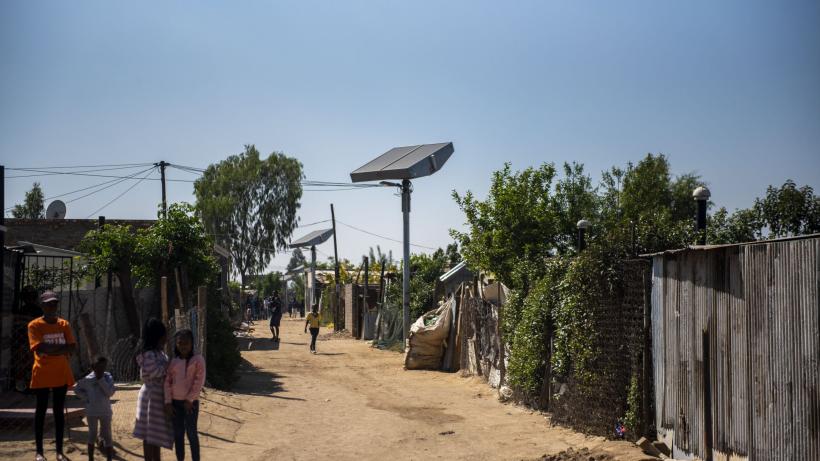
Climate change mitigation and adaptation is not enough to restore our Earth
Climate change solutions typically fall into one of two categories: mitigation and adaptation. While critics argue that such categorisation is too narrow, I draw upon findings from an IGC country-wide consultation to explore climate change policies and priorities across our partner countries. I argue that although mitigation and adaptation are important policy themes, policy that also induces disruptive innovation, collaboration, and community-driven solutions yield significant impacts to restore our Earth.
Climate change is an issue that requires collaborative efforts to address. It threatens all of us, especially many of the world’s poorest, causing approximately 150,000 deaths per year globally. Mitigation and adaptation policies and initiatives have an important role to play in addressing the current challenges from both a developed and developing country perspective. However, how these are implemented in practice differs across countries and further efforts are needed to adopt a bigger picture of policies across countries that address climate change.
The notions of mitigation and adaptation in developing countries
Mitigating climate change is concerned with implementing policies, regulations, and standards that lower emission levels. It is expected that fast-growing developing countries will account for the bulk of increases in emissions over the next decade, due to higher growth and demand for energy. As I spoke to IGC country teams, it was evident that pressures to form mitigation policies were present, although mostly donor-driven rather than government-owned. For example, in several countries, while connecting households and firms to electricity was a major priority, this new access was largely fossil fuel based and electrification through renewable energies were driven by international donor agendas. This creates a disconnect whereby climate change mitigation policies are not prioritised by developing country governments, not due to a lack of interest, but because of other more pressing priorities, such as alleviating poverty, escaping fragility, and promoting growth.
Adaptation to climate change is concerned with protecting the people, economies, and environments most exposed to the effects of climate change – most of which occur in low-income developing countries. In many of the countries I consulted, especially African countries, adaptation efforts are sector and geography specific; there is a lack of government buy-in and minimal, if any, overarching and cross-cutting adaptation policies. For example, most adaptation efforts are focussed in the agriculture sector. This is due to agriculture being a key sector of the economy and source of livelihood for much of the population. With activities based on traditional farming methods, many small holder farmers, and in turn the population, are vulnerable to climate shocks. Therefore, adaptation was only a priority when it was evident there were climate change effects on large portions of the population, with adaptation measures targeted to protect the specific vulnerable groups.
Broader solutions are needed
Change through advocating for climate change mitigation and adaptation policies in developing countries has some benefit. However, given the priorities on growth in developing countries, especially to ‘build back better’ from the effects of COVID-19, it is necessary to adopt new policy approaches that can lead to inclusive and accelerated improvements, which are sustainable. Although not an exhaustive list, here are three broad ideas to reap improvements in developing country contexts:
- Climate change should be a cross-cutting consideration in all growth policies: Rather than approaching governments with direct climate change dialogue to request a shift in priority, it is better to support existing priorities from a sustainability perspective. This would enable better collaboration as it is based on commitments and will enhance sustainability through government-owned efforts. This includes policies that promote structural transformation away from climate-vulnerable sectors, as well as supporting national development plans with environmental protection as a key component.
- Create an enabling environment for disruptive technology: Innovative technology that is solution orientated and improves the way consumers and businesses operate can bring about a new, forward looking way of doing things. This is especially relevant with access to energy efforts, whereby distributed renewable energy technologies, such as solar home systems, play a significant role. To make this a reality, an enabling environment must be put into in place to attract investments and climate-friendly disruptive technology. This in turn promotes growth, poverty reduction, and other important government priorities, while attracting a broad range of context-specific innovations that can go far in addressing climate change.
- Foster collaboration, learning, and knowledge sharing: Collaboration across public and private sectors, international communities, NGOs, and research departments is necessary to make progress. This includes the sharing of cross-country experiences to promote learning and reap solutions with regards to climate shocks, responses, and sustainable growth. This collaborative approach should be supported and initiated by international organisations, especially to foster connections that enhance knowledge sharing across different countries and contexts.
Conclusion
While climate change mitigation and adaptation are important policy themes, with other pressing agendas developing countries often don’t give them the focus required. Instead, a broader approach is needed to reap climate change solutions, including supporting developing country growth priorities with a sustainability lens, enabling disruptive technology to address climate issues, and promoting collaboration and sharing of knowledge and best practices.
This blog is part of IGC’s sustainable growth series.

